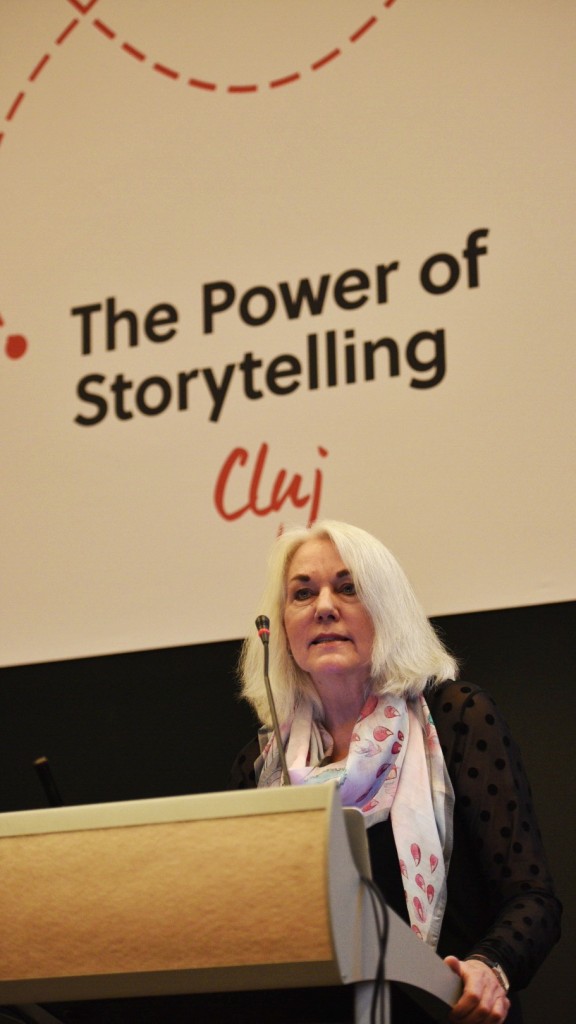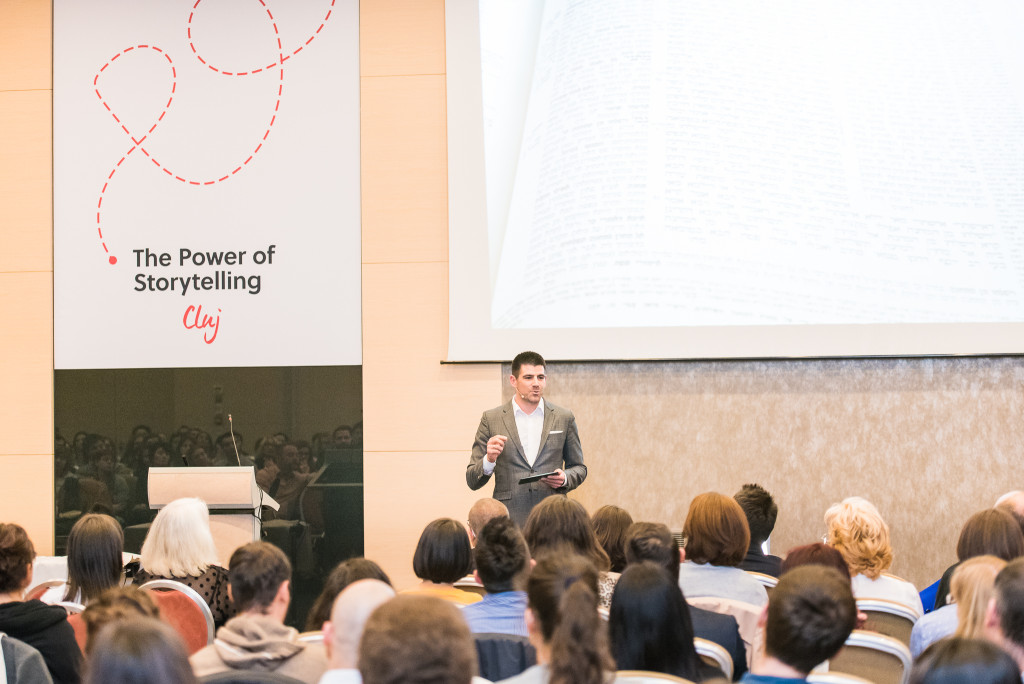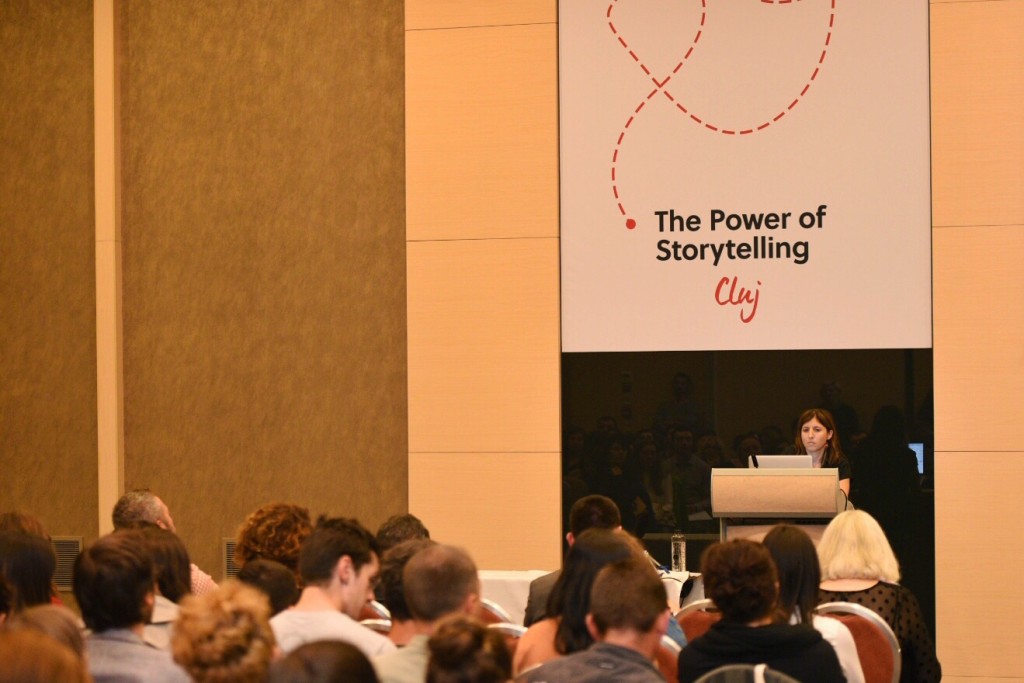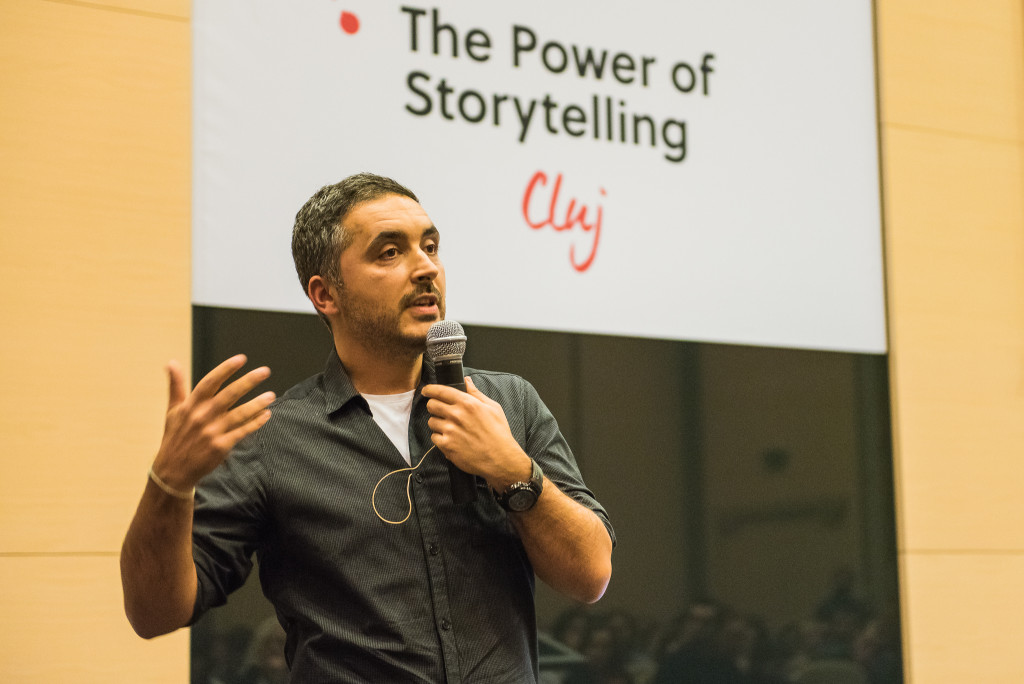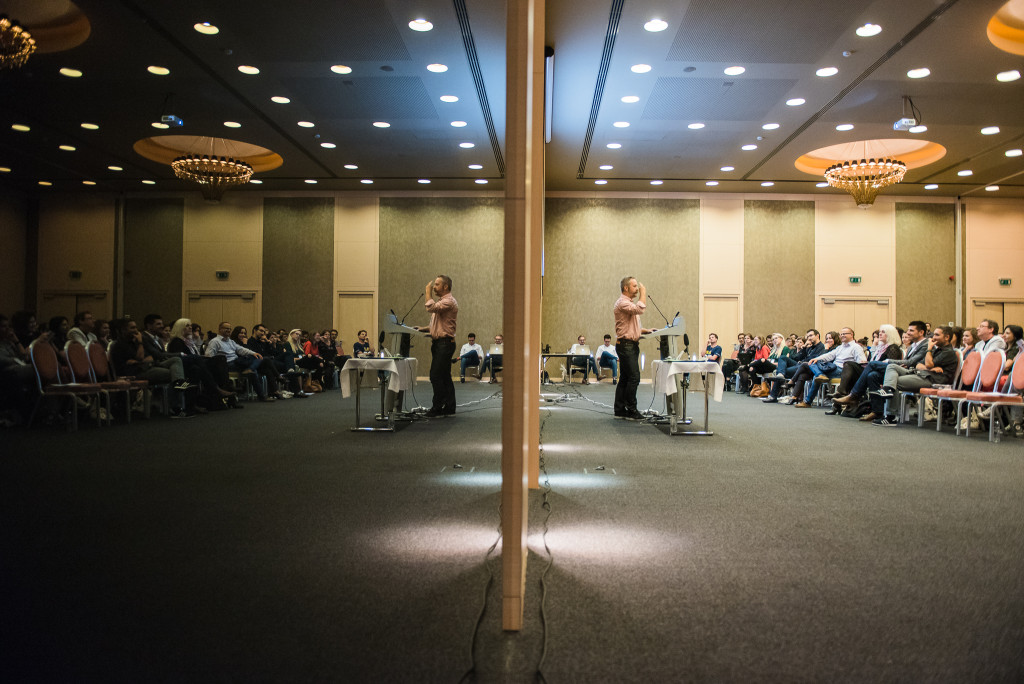The second edition of our international conference in Cluj Napoca brought on stage five award winning writers and editors, visual storytellers, storytelling coaches, audio wizards – amazing innovators who shared craft tips and insights into their work process, personal stories and wisdom.
Jacqui Banaszynski opened with a talk about the importance of story structure – and even though she warned there will be no crying, the powerful stories she brought up did make an emotional argument.
- One of the frustrations of writing is that you never arrive. If you’re good, you’re never good enough. Students keep asking me: “How do you know you’re a good writer?” You never do. Bad news but also good news. It means you can always get better.
- Writing is construction – with ideas and words instead of wood and fabric. Lots of people believe writing is magic. It can be magical. Done well it may be the most magical thing in the world. But the practice of it is not magic. It’s work. If you know the mechanics and have the right tools in your toolbox, you can call on the muse.
- Character. Scenes. Telling details. Those close shots that bring the readers’ eyes into the story and puts them in the moment. The more you look for them, the more you can elevate your work. Action. Theme and meaning. That’s your raw material.
- Character. Make it as specific as possible. You want to bring all of a person’s unique traits to the forefront – but in a way people can relate to.
- Scenes and telling details. Think of your notebook as a camera. Think cinematically. Close-up shots: zoom in tightly to signal something is important. Zoom out for context. Pan for movement.
- Little tiny details make all the difference. You have to hunt for these details – you’re the miner out there.
- Use scenes that not only put people in place but help them understand a deeper emotion. Scenes that, instead of telling you whats going on, show you.
- Structure is what affects writers most. The more complex the story, the simpler the structure. The simpler the structure, the more you can be creative. Look for structures in music, haikus and poetry, Facebook posts and tweets, maps. Once you know how to build the house and what’s its the purpose, you can decide how to decorate, what furniture to bring in. Find a foundation that serves your story.
- Listen to stories because they will tell you how they want to be told.
- The most important tool in your tool box is belief. You have to believe you can do this. Believe that the work matters. That writing and communicating is as fundamental to us human beings as anything else in the world.
Dragoș Bucurenci talked about the stories we tell about other people – why some they get to stick, and why we should pay attention to the narratives we project into the world.
- Religion, politics, show biz – what they all have in common is idols. All are based on stories about exceptional people, gone viral.
- Why does a story survive? Because it confirms previous stories. It fits the picture. Stories that confirm previous stories stick with us.
- Beware of stories. While they can build you in the minds of people, they can also destroy what you’ve built.
- Beware of stories. Reality is not neatly structured. Stories are a work of the mind. Beware of looking at the world as if looking at a story.
Starlee Kine used her “detective” work and solving real life mysteries for the Mystery Show podcast, in order to make a case for the power of stories to create human connection.
- There are different kinds of stories: some where the stakes are obvious, and these little crums that populate our lives. In order to find a compelling character, look for the people who are really excited about something.
- People are natural storytellers when they talk about something they know. Get out of the way. A story is happening, don’t try to insert yourself.
- The thing about a good story is texture. You’re not just laying out information, you’re creating a feeling.
- You can capture human connection forming in real time. Moments that feel comfortable and natural and real.
- There’s a power in knowing what you’re after. Ask about this legitimate thing you’re wondering about. Ask something that you actually want to know about a person. That’s how you create connection.
Alex Gâlmeanu grounded his talk in a compressed evolution of photography – from images that needed 24 hours exposure, to the first portable cameras, to the clutter of lenses, cables and accessories, and eventually to this day’s omnipotent smartphone. Technological barriers have been overcome: “Today, with the technology we have at hand, any kid can take a beautifully lit picture.”
- So what is a photographer to do, in these times when anyone can be not only a producer but also a distributor of visual content?
- „What makes an object be an art object? Not the medium, or the craftsmanship, or the effort – it’s the idea.” In a time when photography is more democratic than ever before, „I choose to think.”
- „The modern photographer is the one who can bring ideas into the world. It’s never just about photography, it’s about life.”
Chris Jones offered a perfect ending to this year’s The Power of Storytelling journey, with nine rules and a substantial dose of humor, wisdom, and inspiration for anyone doing creative work. Or, as he defined it: „The work that puts life where life hasn’t been before.”
- There are rules.
As with building a car, there are the laws of physics, there are parts you have to use. You need to know the rules so you can break them – and some you have to keep.
- You will be voracious in your appetites.
The thing you love, the thing you want to be – you have to look into everything that has been that before you. You have to consume everything – it teaches you what’s possible, and what’s not. Take the things you love the most, keep them, make them talismans. They’re the star in the sky you’re guided by.
- There is no right process.
You need to find the process that works for you. The problem with being creative is there are moments when it works better than others. Find the time and place that give you the best chance to be in that zone.
- You must be disciplined.
Any good creative person I know is discplined. Dedicating time to write, dedicating time to read. It’s work. It’s labour. You have to be single minded about what you’re doing. Clean your place, sit down, do the work.
Quoting a friend: “All creative advice, all writing advice, can be summed up in three words: ASS IN CHAIR.”
- Like success, you will take your time.
Teller, the magician, once told me: “Sometimes magic is just someone spending more time on something than any one else may reasonably expect.”
- You must be honest with yourself and love what you do.
If you’re not doing it because of something inside your chest, you won’t be driven enough, you won’t be obsessive enough, you won’t put in enough time.
- The work will not always love you back.
It will rarely meet your expectations from yourself. You will hardly be satisfied. Creating something is not math. There isn’t necessarily a right answer, you can always keep working, tweak a sentence.
Good work doesn’t always win. It wins for you – you know when you did something good. But if you put your hope into how other people will react, it will hurt.
- You will be lonely
There will be nights when you will feel completely by yourself. It’s quiet work. Sometimes you feel crazy, wondering: Why do I care so much about this thing? Doubt, criticizm creeping in – that’s when it’s good to be alone.
- Believe
You’re gonna do it. You got this. It’s gonna be OK. You’re gonna make something good. Nothing good has ever been made by someone who didnt believe to the core that he was making something good.
This conference is like a miracle, like a factory that manufactures belief. It makes me feel like I can do it. You can do it. We can do it.
Photo credit: Vlad Cupșa
We know. There never seem to be enough takeaways from The Power of Storytelling. Have a look at what we learned from Day 1 and Day 2 of the conference in Bucharest.

